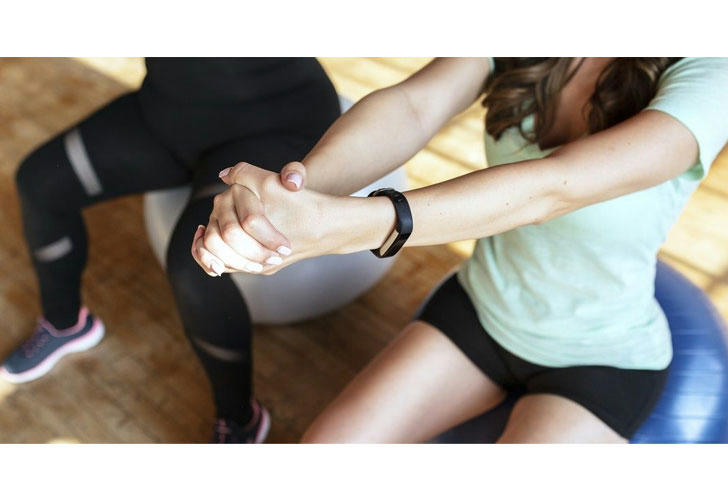How can patients with multiple sclerosis conduct effective daily rehabilitation training?
Multiple sclerosis (MS) is a chronic autoimmune disease that affects the central nervous system, leading to a range of physical and cognitive symptoms. While there is currently no cure for MS, effective rehabilitation training can significantly improve the quality of life for individuals living with this condition. This article outlines practical strategies for daily rehabilitation training, identifies suitable populations for these methods, and recommends products that can support individuals with MS in their journey toward improved mobility and independence.

Suitable Populations
The following groups may benefit from non-pharmacological approaches to managing multiple sclerosis:
1. Individuals with Mild to Moderate MS: Those who have not yet experienced severe disability can often engage in various forms of exercise and rehabilitation.
2. Seniors with MS: Older adults may require tailored exercises to maintain mobility and prevent falls.
3. Individuals Experiencing Fatigue: Many people with MS face fatigue; appropriate exercise can help manage energy levels.
4. Those with Spasticity Issues: Individuals dealing with muscle tightness or spasms can benefit from stretching and flexibility exercises.
5. People Seeking Holistic Solutions: Many individuals prefer natural remedies and lifestyle adjustments over medications.
Key Components of Daily Rehabilitation Training
1. Stretching Exercises
Stretching is crucial for maintaining flexibility and reducing muscle tightness. Regular stretching helps prevent contractures (permanent tightening of muscles) and improves overall mobility.
Recommendation: Dedicate at least 10-15 minutes daily to stretching major muscle groups, focusing on areas prone to spasticity.
2. Aerobic Exercise
Engaging in regular aerobic activity can enhance cardiovascular fitness, reduce fatigue, and improve mood.
Recommendation: Aim for at least 150 minutes of moderate aerobic exercise per week. Activities such as walking, swimming, or cycling are excellent choices.
3. Strength Training
Resistance training helps build muscle strength, which is essential for maintaining mobility and independence.
Recommendation: Incorporate light weights or resistance bands into your routine at least twice a week, focusing on major muscle groups.
4. Balance and Coordination Activities
Balance training is vital for preventing falls and improving stability.
Recommendation: Practice exercises like standing on one leg or using a balance board to enhance coordination.
5. Water-Based Exercises
Aquatic therapy provides resistance while reducing joint strain, making it an excellent option for individuals with MS.
Recommendation: Engage in water aerobics or swimming sessions to improve strength and flexibility without the risk of overheating.
6. Mind-Body Practices
Techniques such as yoga, tai chi, or Pilates can enhance flexibility, balance, and relaxation.
Recommendation: Participate in classes designed for individuals with MS or follow instructional videos at home.
7. Fatigue Management Techniques
Learning to manage fatigue through pacing activities is essential for individuals with MS.
Recommendation: Break tasks into smaller steps and incorporate rest periods to conserve energy throughout the day.
8. Cognitive Exercises
Engaging in brain-training activities can help maintain cognitive function.
Recommendation: Solve puzzles, play memory games, or participate in activities that challenge the mind.
9. Assistive Devices
Using mobility aids can enhance independence and safety during daily activities.
Recommendation: Consider using walkers, canes, or grab bars as needed to prevent falls.
10. Regular Monitoring and Adaptation
Regularly assess progress and adapt the rehabilitation program as needed.
Recommendation: Work closely with a physical therapist or healthcare provider to tailor exercises based on individual capabilities and symptoms.
Recommended Products for Rehabilitation
1. Resistance Bands
Example: TheraBand Resistance Bands
These bands come in various resistance levels and are perfect for strength training exercises at home.
2. Balance Trainer
Example: BOSU Balance Trainer
A versatile tool that can be used for balance exercises, core strengthening, and stability training.
3. Water Dumbbells
Example: Aquatic Exercise Equipment
Ideal for water-based workouts that provide resistance while being easy on the joints.
4. Yoga Mat
Example: Liforme Yoga Mat
A high-quality mat provides comfort during stretching and balance exercises at home.
5. Exercise Videos/Apps
Example: YouTube Channels like "Cleveland Clinic" or "MS Society"
These channels offer guided exercises specifically designed for individuals with multiple sclerosis.
6. Fitness Tracker
Example: Fitbit Charge 5
A fitness tracker that monitors physical activity levels, heart rate, and sleep patterns, helping users stay active.
7. Physical Therapy Apps
Example: PT Timer App
This app helps track rehabilitation exercises, set reminders, and monitor progress over time.
Conclusion
Effective daily rehabilitation training is essential for individuals living with multiple sclerosis to enhance their physical abilities and improve their quality of life. By incorporating stretching exercises, aerobic activities, strength training, balance practices, water-based workouts, mind-body techniques, fatigue management strategies, cognitive exercises, assistive devices, and regular monitoring into their routines, individuals with MS can make significant strides toward greater independence.
The recommended products provide valuable tools to support these efforts at home or during therapy sessions. Always consult with healthcare professionals when developing a rehabilitation program tailored to individual needs and capabilities. With consistent effort and the right resources, individuals with multiple sclerosis can achieve meaningful progress in their daily lives.
